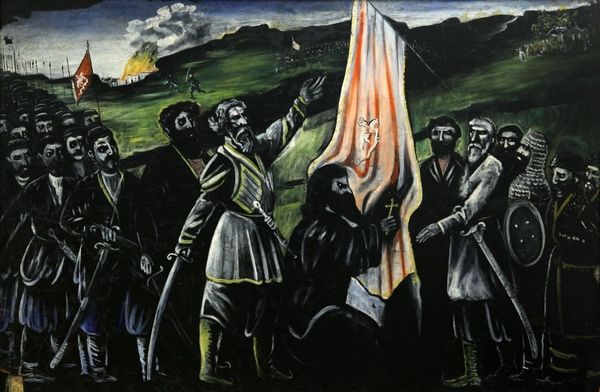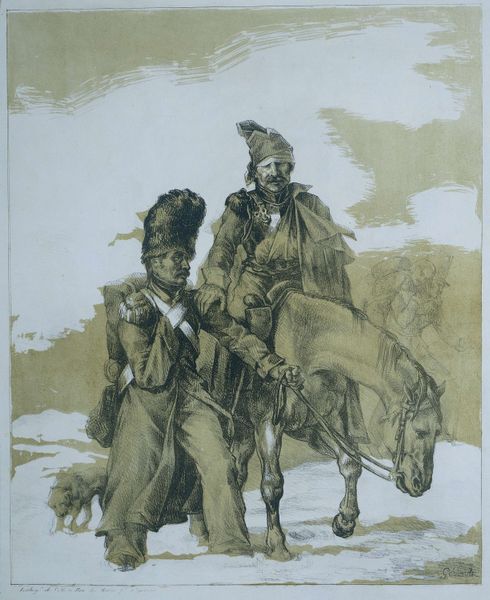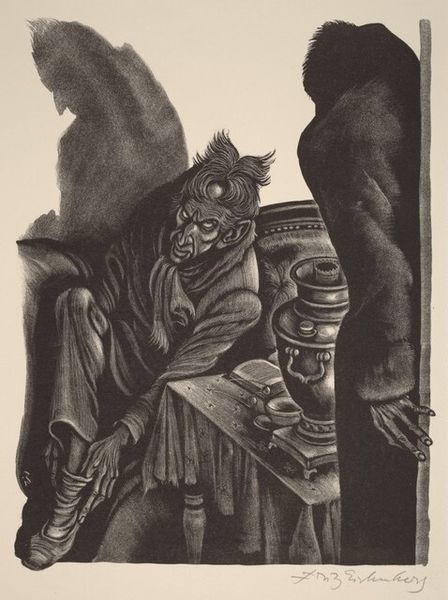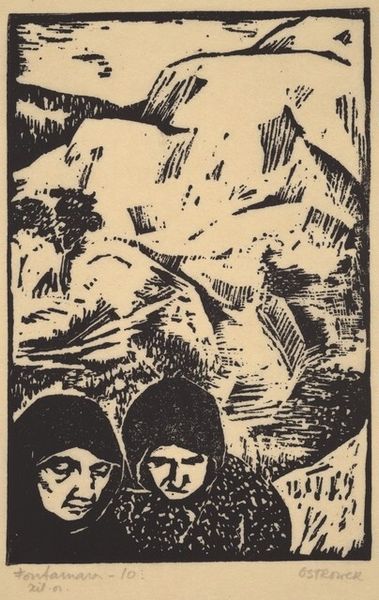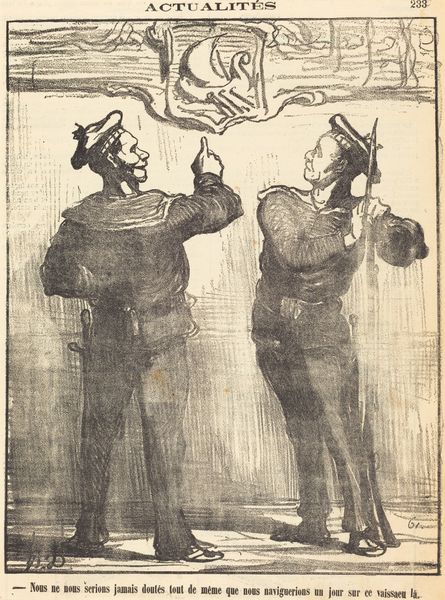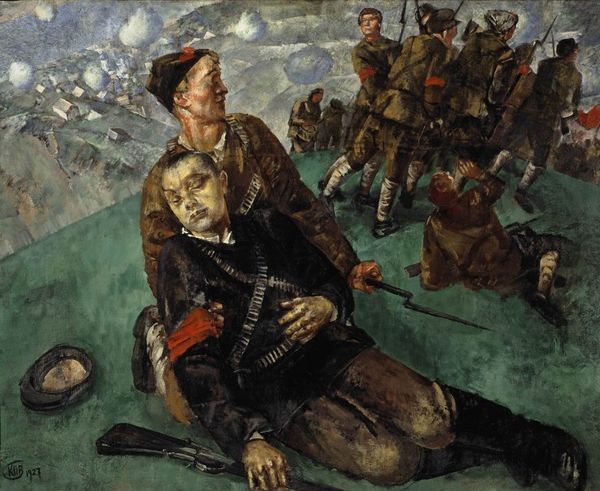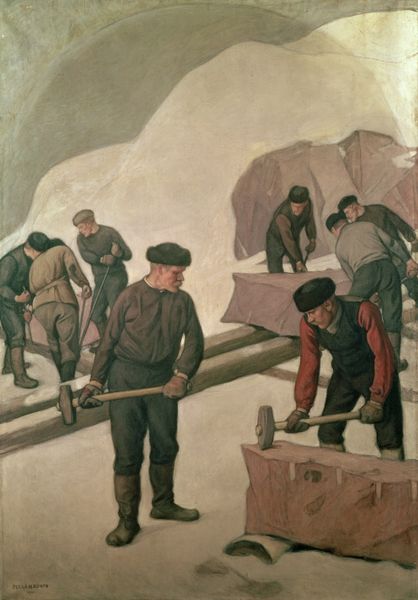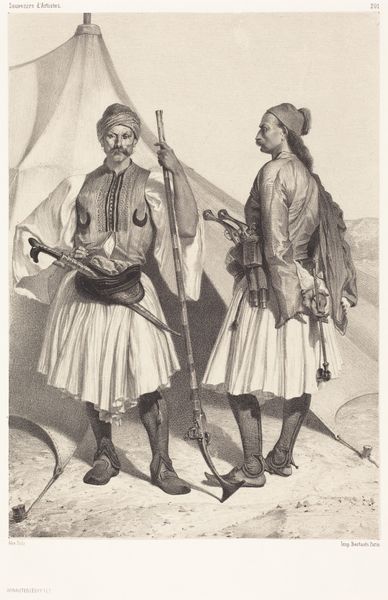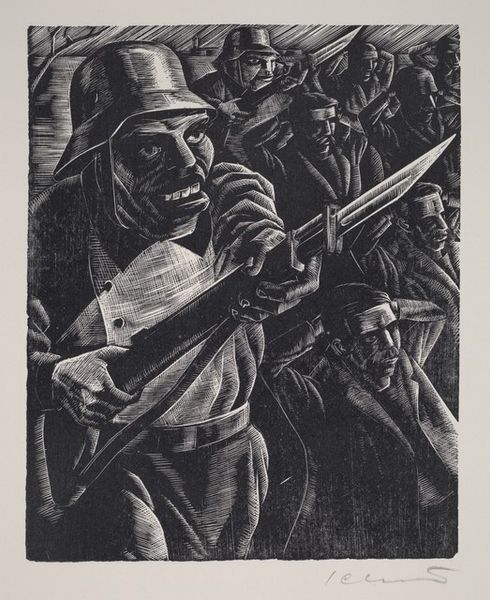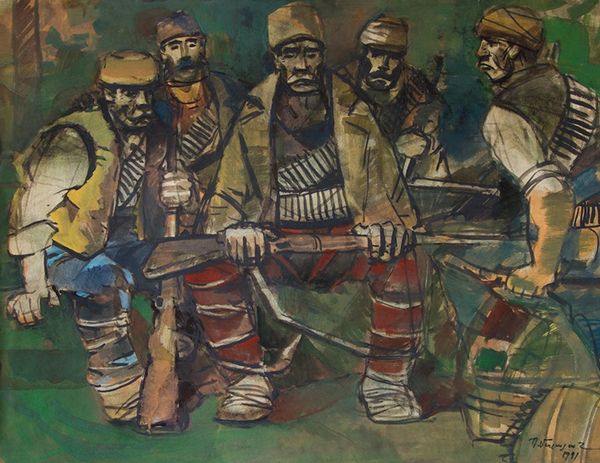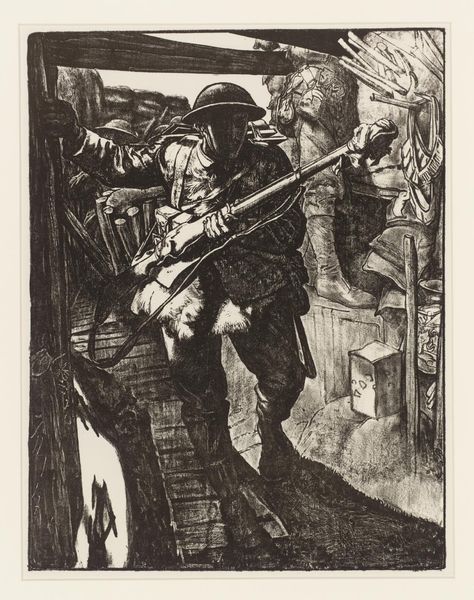
Shete showing the way to Noble Baryatinski in order to arrest Shamili
0:00
0:00
nikopirosmani
Art Museum of Georgia (AMG), Tbilisi, Georgia
painting, oil-paint
#
portrait
#
narrative-art
#
painting
#
oil-paint
#
art
#
acrylic on canvas
#
soldier
#
romanticism
#
mountain
#
surrealism
#
history-painting
#
surrealist
#
portrait art
#
fine art portrait
#
realism
Dimensions: 113 x 89 cm
Copyright: Public domain
Curator: Niko Pirosmani's painting, "Shete showing the way to Noble Baryatinski in order to arrest Shamili," presents a compelling historical narrative. The medium appears to be oil paint, employed with a characteristic raw energy. Editor: There's a distinct sense of tension created by the juxtaposition of these two starkly contrasting terrains. It's almost stage-like; unsettlingly theatrical, isn’t it? Curator: Indeed. Note how the figures command a visual hierarchy, separated yet interconnected. Baryatinski with his spyglass embodies detached observation. The other figure gesturing outwards conveys immediacy of action and service, acting as a pivot. The visual structure creates narrative drive and imbues a certain symbolic importance into these individuals, doesn't it? Editor: Consider too the materiality of that ladder slanting against the darker planes – seemingly discarded or perhaps yet to be used. Is it there as just one more implement, or is Pirosmani suggesting some social or logistical division between laboring or the aristocratic men leading this campaign? I wonder about the labor involved in procuring materials. Curator: Pirosmani’s characteristic simplicity invites deeper consideration. The constrained palette lends the historical subject matter a somewhat mythic atmosphere, enhancing the dramatic and monumental aspect while at the same time reminding us of the limitations of the artist's material conditions and perhaps that of the characters he depicts here. Editor: And look at the massed army way off in the distance: each anonymous, reduced to indistinguishable dots on the rough path, but essential to the execution of Baryatinski’s observed task, a bleak portrayal of men used by political operations in such challenging environments. It makes you think of the logistics, supply chains, even the tailors that would have made their uniforms, an untold side to this history of nobility and capture. Curator: It's intriguing to consider how this scene speaks to the nature of leadership, observation, and execution. Editor: It also opens up broader reflections on the processes inherent to even acts of violence. Every tool has its process: the telescope, ladder, horse and uniform. Curator: Indeed, offering much in the way of insight into social and material dynamics embedded in what appears as mere historical depiction. Editor: It reminds me how often, even in images like this, materiality whispers tales of the broader, often ignored or obfuscated, processes involved.
Comments
No comments
Be the first to comment and join the conversation on the ultimate creative platform.
